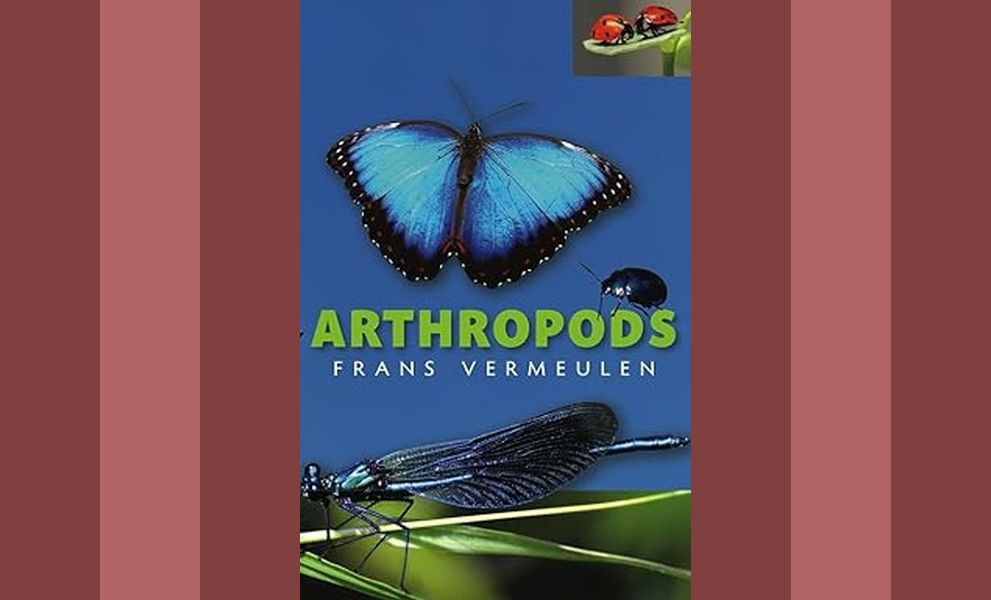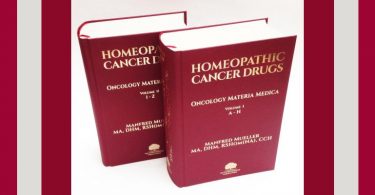Title: Arthropods
Author: Frans Vermeulen

Publisher: Saltire Books, Scotland.
Year of publication: 2023
ISBN: 978-1-908127-36-5
Hardcover, black and white, 1356 pages
Reviewer: Vatsala Sperling
Just as you open the book and begin to look at the title page, you can get the idea that this book is about to present to you a delectable and sumptuous fare comprising of materia medica, clinical manifestations, toxicology, affinities, biological profiles, and characteristics of arthropods.
As you read further along, you will come away satisfied, and convinced about the fact that ‘Vermeulen delivers what he promises.’ Having read and reviewed the book Reptiles by Frans Vermeulen, I had grown to expect a great book from him. As I dig into Arthropods, I see that this indeed is a great book – scholarly, well-written, full of facts and information we need on the subject.
In this classic textbook, the table of contents runs 28 pages long. You can imagine, Frans Vermeulen has cast his net wide, catching as many arthropods as are relevant to homeopaths, and educating us on many facets of these creatures. At the outset, a full page is dedicated to “About this book”. It lays out the salient features of the entire book.
As a reviewer, I encourage you to read the preface a few times over and let it sink into your psyche till it asks you to look at the arthropods, in fact, all creations, with clear and open eyes. An estimated 85% of all known species of animals are arthropods but they have been poorly represented in our 19th century materia medica texts due to lack of knowledge, and preconceived incorrect notions.
In his monumental effort at setting the records straight, Vermeulen has been inspired by naturalists and entomologists from prior centuries who saw arthropods as endowed with unique wisdom, power, and perfection, and who noted that though most detested by man, the arthropods are his best benefactors.
In imbibing the wisdom from over 700 books, documents, records, articles etc. for writing this book, Frans could resonate with the idea that our world is riddled with order, regularity, plan, and purpose. Every organism populating our earth has a distinct use and virtue.
When you examine this idea deeply, you will not step on and walk mindlessly by something as humble as an insect – it has a distinct use and virtue. In considering the subject of this book, arthropods, as the most successful animals of the earth, Vermeulen debunks the materialistic theory of evolution with a sweeping hand, and points us to the path that is illuminated by a question that Hahnemann asked,
“In our time, which boasts such enlightened and deep thinking souls, does it have to be so impossible to conceive of a nonmaterial dynamic force when we see around us every day so many phenomena that cannot be explained in any other way?”
Instead of looking at arthropods as an ‘insignificant nuisance’, Frans Vermeulen has seen them as leading a purposeful life, based on an innate plan and befitting design, and equipped with the potential to adapt – within the limits of their kind – to changing environments.
These observations, insights, and musings about the insects, and every other life form, has propelled Frans into writing this book on arthropods. Inspired by the author’s insights, when you ask yourself to examine the animate and inanimate world around you as imbued with spirit and purpose, and moved by an innate sense of mutual co-operation, collaboration, and support, you will begin to understand the special and dynamic spot each creation holds in nature and how this dynamism can be tapped into by homeopathic processes for creating remedies that benefit the sick.
In his brief preface, Frans Vermeulen has highlighted the idea that every life-form exists for every other life-form. Nothing is purposeless, random, accidental, and out of place. This preface turns the book from a matter-of-fact textbook to a thought-provoking and inspiring book.
Individual sections are devoted to ticks and mites, crustaceans, insects, centipedes and millipedes, scorpions, spiders, and finally horseshoe crabs. In these sections, available remedies are listed, and the author gives a set of cues and clues that consist of a list drawn from empirical source information that read almost like “themes”.
There are 64 illustrative cases spread through the book. It was entertaining to read insect expressions on pages 250-254. These common sayings derived from our day-to-day expressions show our collective regard for insects and our tendency to see them as a source of nuisance… though the author has urged us to see each species as having a specific purpose and inter-dependent place in the larger scheme of things.
Further readings will take you through various details of the arthropod species the author is writing about. Take for example, Apis mellifera, a common insect from which we have a remedy. We get to read about biological profile, development and reproduction, themes of supremely ordered hustle and bustle, defense, communication, maintaining the right temperature, and attacking the color black.
Materia medica goes into symptoms of mind, dreams, generals, sensations, and locals. It does not present a head-to-toe symptomology of Apis as seen in other contemporary texts on materia medica. Various physiological processes are tied to the effects of sting, for example, projectile vomiting, violent diarrhea, prickly sensation, dyspnoea, faintness, fullness, and bursting, urticaria, nausea, sleeplessness, intolerable itching, loss of taste, collapse, pain in heart region, feeling of suffocation, and feeling impelled to move about.
Similarly, the distinctions between the three castes of Apis, workers, drones, and queen are remarkable. The queen bee has her own unique features biological profile, and as all activities in the hive are centered around her, she is endowed with special characteristics.
She mediates and integrates the hive activities. She rules absolutely. Her art of governing does not include denigration and tyranny. The queen is subordinate to the spirit of the hive. She is a multi-hearted good mother of a happy, big family, but she cannot help feeling intensely jealous of the younger queens and she seeks to kill them.
Again, such a distinction we do not find when we simply read the materia medica of Apis mellifera. I found such details very interesting, and though I have pointed out just one, there are many, many more in the book for you to discover on your own.
This grand book is highly practical and full of facts that would give you a fresh perspective on the arthropod remedies you are familiar with, or you know nothing about. It is a reference book of encyclopedic depths, and the beauty of this book is that Frans Vermeulen has kept it focused on the theme of educating us on all features and aspects of the rich and magnificent world of arthropods. Thank you, Frans, for this exemplary treat!







Thanks, very useful and interesting !